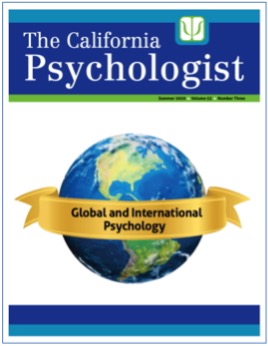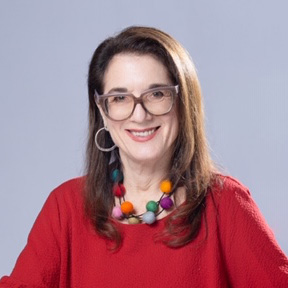 Ilene A. Serlin, PhD, BC-DMT
Ilene A. Serlin, PhD, BC-DMT
Why is an article on trauma in international settings so important at this time?
The rising tide of suffering, displacement and natural disasters calls for expanded available human services.
Creative and mind/body approaches to working with trauma and PTSD can complement available services with cost-effective and humanistic methods. This article will show how using these methods to work with trauma can cut across cultures, promote resilience and help heal from trauma.
At this moment, the trauma of COVID-19 is exposing underlying cracks and traumas in healthcare, racial disparities, trust in government, housing and employment in the US. The Washington Post (Fowers & Won, 2020) recently reported that one-third of Americans are facing anxiety and depression. Racial incidents against Asian American health-care workers are rising, and there is a surge in hate crimes.
What can one person do?
As a psychologist, it can be overwhelming to consider the amount of suffering. It is natural to close off, feel helpless or out of control. We might experience guilt or shame, survivor guilt “moral distress” or “moral injury.”
Jordan and Cultural Loss
I had those feelings until one day I was transfixed by the photo of the two-year old Alan Kurdi, a Syrian migrant boy who drowned on a beach in 2015. I contacted Steve Olweean, President of the International Humanistic Psychology Association, who was working with Syrian refugees in Amman. He invited me to join him and Myron Eshowsky in building a locally based, sustainable psychosocial service system. We started with an International Conference on Intergenerational Trauma, worked with the Syrian widows and children, and trained the medical and social work students to run basic support groups. Olweean brought together Michigan State University and Yarmouk University to develop the first joint clinical social work master’s program. To this training I brought in the element of dance. Dance and the arts were effective ways to express emotion since the Syrian women spoke only Arabic and talk about trauma was not culturally accepted. The women were grieving not just family or homes, but the loss of their culture. So we danced. While we were belly-dancing in that room together, we were all just women.
I returned to Amman for the next four years, and then worked on creating training modules that could be used under supervision by the medical and social work students. With a grant from the American Dance Therapy Association, I created a pilot video to teach students how to introduce movement and art into their support groups. It also demonstrates how to use the indigenous arts and movement choirs to heal cultural loss and rebuild community.
Here is a link to that video:
Body and Art in the Healing of Trauma
Recently there has been new interest in embodied approaches to psychotherapy. The experience of trauma is contained in the body and has been described as speechless terror (Van der Kolk, 1987); therefore nonverbal and symbolic approaches are needed to address it. Trauma is also a crisis of mortality, meaning and identity; therefore, existential perspectives are needed to work with it (Serlin & Cannon, 2004). Trauma is also about stuckness, fragmentation, numbness, and an inability to play; therefore creative, imaginal, connecting and emotional approaches are needed.
The arts heal from the basic human need to create, communicate, create coherence, and symbolize. They are transcultural, expressing archetypal symbols that are universal throughout history and across cultures (Carey, 2006). Building on creativity, they facilitate posttraumatic growth (Calhoun & Tedeschi, 2006), growth through adversity (Joseph & Linley, 2008), hardiness (Maddi & Hightower, 1999), optimism and growth through resilience (Antonovsky, 1979; Epel et al, 1998). Art heals by helping us transcend our stuck places so we can imagine a different future.
Using movement with the women’s support group, we started out with a check-in, warm-up exercises focusing on grounding and stabilizing. Using props and art supplies helped them express emotions and end with a joyful community-building belly-dance.
Community Dance and Community-Building
Since time immemorial, human beings have marked rites of passage, the seasons, and community relationships with dance. Our conference started with an Opening Ritual to bring the community together. I worked with a medical student who supplied local music, while another student and I choreographed a simple version of the Haka, a Maori war dance done by sports teams and medical students in Jordan. The Closing Ritual was co-created by all the volunteers to include traditional feast foods and the Debka, a line dance generally done by men. Sharing rhythm, familiar structures and music brings people together and helps rebuilds community.
From Destruction to Reconstruction: The Path of Resilience
Trauma brings a confrontation with mortality that can lead to the creation of a new identity, sense of meaning, beliefs, existential choice and a renewed will to live (Serlin & Hansen, 2015; Stolorow, 2007). With the courage to create (May, 1975), new narratives can move the self from deconstruction to reconstruction (Feinstein & Krippner, 1988; Gergen, 1991; McAdams, 1997; Sarbin, 1986). What is resilience and can it be cultivated? Resilience is the capacity to bounce back after stress and trauma, to rebuild a life even after devastating tragedy. In our support groups, we literally experienced bouncing, sinking down and rising up, reaching for hope and renewed life force.
Secondary Trauma
Caregivers also experience what psychologist Charles Figley called secondary trauma, burnout or “compassion fatigue” (Figley, 1995). The recent suicide of the COVID-19 doctor shocked the nation into paying more attention to the care for caregivers.
Israel and Intergenerational Trauma
In 1986 I learned that most people in Israel carried intergenerational trauma. All citizens are required to serve time in the military, experience combat and terrorist attacks (Serlin & Speiser, 2007). I worked with the caregivers (Casualty Division) of the Israeli Defense Forces (IDF), young officers whose movements and drawings reflected their level of stress and burnout. Naming the themes that came from their movements and drawings, they described losses such as loss of innocence, missing their own beds at home, and loss of what made them feel “human and whole.” I also worked with staff from Natal, the Israeli Trauma Center for Victims of Terror and War; SELAH, the Israeli Crisis Management Center (Pardess, 2005); the Casualty Division of the Israeli Defense Forces (IDF), and The Israel Center for the Treatment of Psychotrauma (ICTP).
Turkey and Natural Disasters
In Istanbul, we trained therapists to use a Yalom-based group therapy model with a form of dance movement therapy called KinAesthetic Imagining (Serlin, 1996). In the group, we explored existential issues like life and death (confrontation with mortality); individuality and community; freedom and fate; and meaning and meaninglessness.
After the Soma coal mine disaster where hundreds of workers died, students’ class papers spoke about how the “courage to move” could facilitate expression and transformation on a deeper level. One student wrote:
“My improvisation dance experience was that we started all at a different place as the different elements of the earth, and then at the end we organically came together like the parts of a body…for me to become a whole from different parts were very significant. As I am thinking of the theme of life and death, I ask myself what is going to be born now in Turkey after 300 and more are dead in Soma? Are we going to choose life by bringing all our parts together?”
China
After the 2010 at a conference on Existential Therapy in China, I started a two-year training program on “The Art of Embodiment” in Beijing at the China Institute of Psychology. Unable to travel this year due to COVID-19, we focused instead on providing support for their hotline counselors. To a hotline series I added a video about using the body to feel support and stability. After exploring boundaries and safe space, participants were encouraged to begin to move, feel their emotions again and modulating or releasing them. Using technology to work with the body is new to me but presents a compelling challenge. Online therapy and connecting with others on WeChat was already widespread in China. It also became apparent that we needed to “scale up” in order to reach the many people who needed help. Beginning with doctors in Wuhan and then supervising students on the national hotline through Beijing Normal University, we were able to reach thousands of people. We are currently working on a series called “Heart Dance” where we combine movements and expressions in a story called “Planting Seeds of Hope.” Here is a link to the first video: https://youtu.be/nHuI0CU4ezQ
APA
How can we help here in California? Division 56 of APA is sponsoring an Interdivisional Task Force to gather and disseminate resources to work with trauma across divisions and local psychological associations. If interested, psychologists from CPA can become a partner to this Task Force, contributing and receiving materials on trauma. Please let me know at iserlin@ileneserlin.com. Don’t hesitate – reach out and help. ■
Complete references for this article can be found at www.cpapsych.org – select The California Psychologist from the Professional Resources menu.

Ilene A. Serlin, PhD, B-DMT (iserlin@ileneserlin.com)
is a psychologist and dance therapist in San Francisco and Marin. She is a Fellow in APA’s Division of Trauma Psychology, a Past-President of the San Francisco Psychological Association, a Past-President of APA Division 32, and currently the General Editor of Whole Person Healthcare. She serves on the Editorial Boards of the Journal of Humanistic Psychology, Arts and Health, The Humanistic Psychologist, PsycCritiques, American Journal of Dance Therapy, and Journal of Applied Arts and Health.
